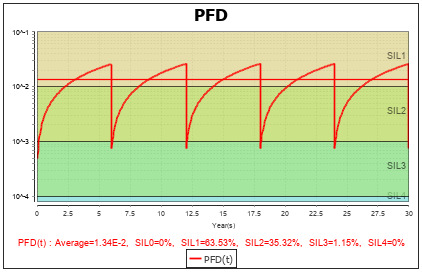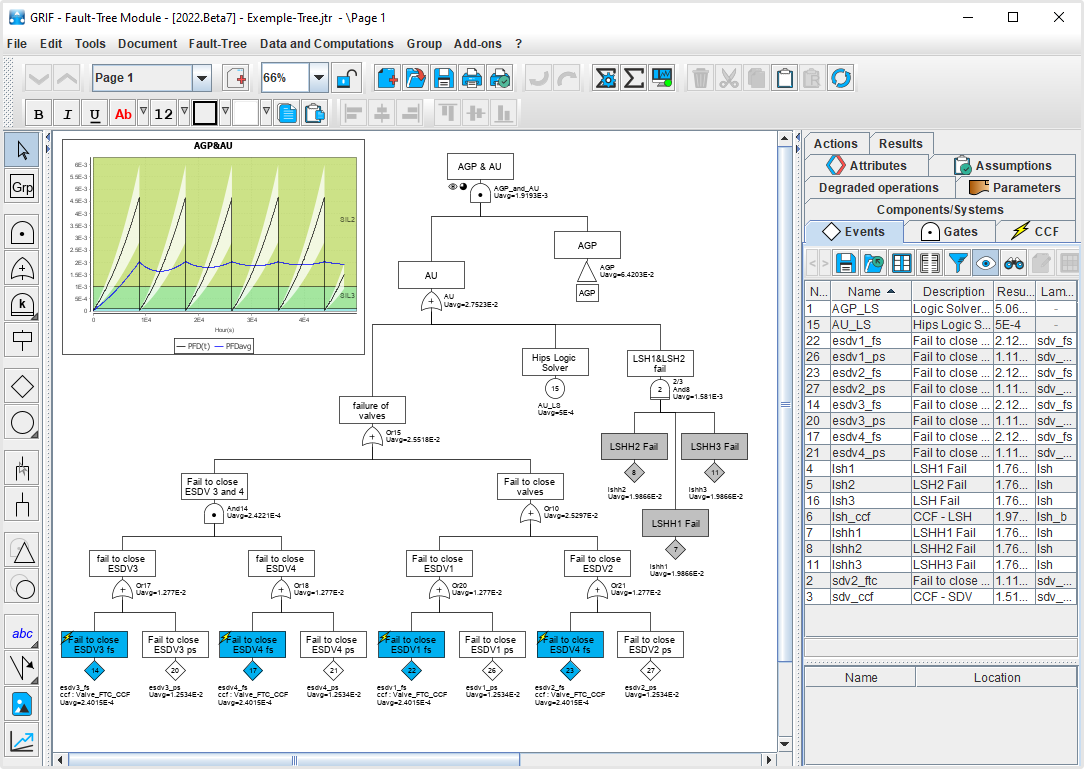The ALBIZIA engine, developed by TotalEnergies, produces a wide range of results for analytical calculations:
- Unavailability: Q(t), U(t) or PFD(t), Availability: A(t), Reliability: R(t), Unreliability: F(t);
- Frequency: W(t), UFI(t) or PFH(t); and Failure rate: λeq(t), λv(t) or CFI(t);
- Usual mean values: MTTF, MTBF, MUT, MDT, number of failures;
- Minimal cut sets (probability and frequency of cut sets);
- Reliability allocation;
- Many importance factors (Birnbaum MIF, Critical CIF, Vesely, DIF, etc.) that help users identify and correct system weaknesses.
Calculating the time spent in the SIL zones: in addition to the calculations defined above, ALBIZIA is the only engine that can calculate how long the PFD(t), PFH(t) or EqLambda(t) of a system spends in the various intervals during its operational life.
The figure below shows a mean availability of 8.44E-3, which corresponds to SIL2. However, it also indicates the percentage of time the system spent in each SIL over its 30 years’ operation. In this case, it spent 39.77% of the time in SIL1.

User-friendly design:
- Groups/sub-trees are easy to create and with the automatic layout feature, users can effortlessly organize their tree simply by pressing the F7 key.
- With the sub-tree templates, it’s easy to build trees for systems that use known equipment.
- In addition to the editing window for each object, GRIF produces data tables that make it easier to control the quality of input data and modify information (find/replace, suffixes, prefixes).
- • GRIF features plug-ins for entering input data, either based on internal feedback from the field, standards or commercial sources. Having accurate input data saves time for users.
Propagation of uncertainty: To simulate real-life conditions as closely as possible, parameter-related uncertainties can be factored in. For example, you can specify whether a failure rate follows a Uniform, Normal or Log-Normal distribution. A Monte-Carlo simulation is performed in addition to the BDD calculation to obtain mean values. Finally, a quantile calculation is performed to provide a confidence interval for each result. It can be an interval of 60, 70, 80, 85, 90, 95 or 99% (centered or not).
N.B. it is a requirement with the IEC standard 61511.











